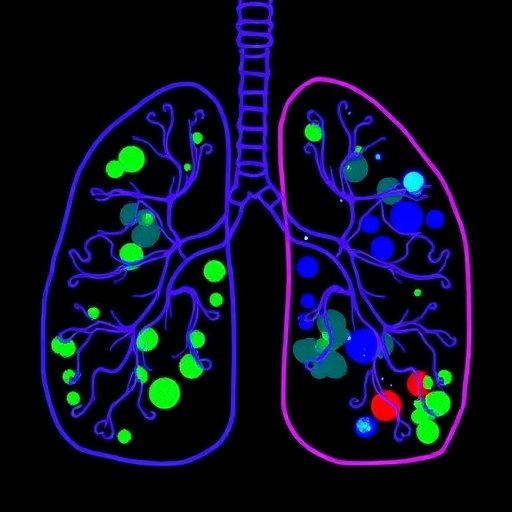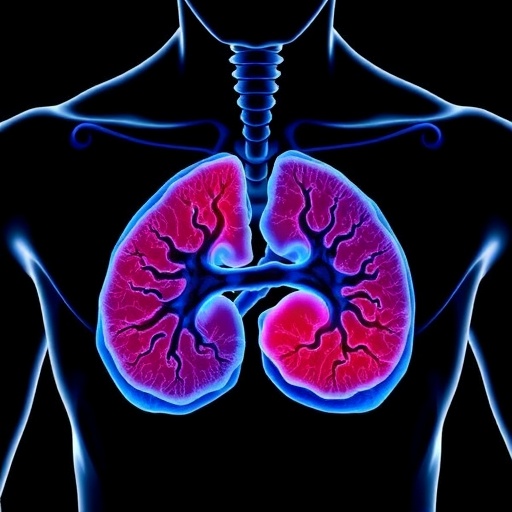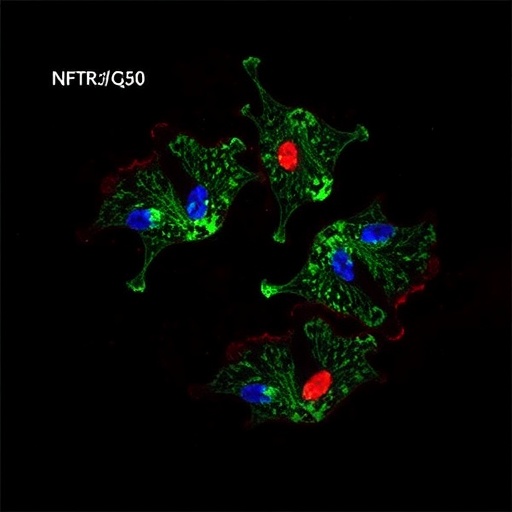In the evolving landscape of lung cancer diagnostics, researchers have uncovered promising metabolic signatures that could revolutionize the detection and characterization of pulmonary nodules. A cutting-edge study published in BMC Cancer explores the intricate metabolic variations distinguishing benign nodules, precursor lesions, and invasive lung adenocarcinoma. Utilizing high-resolution mass spectrometry, this investigation charts a detailed biochemical roadmap, bringing the medical community closer to non-invasive, precise lung cancer detection.
Lung adenocarcinoma, a predominant subtype of non-small cell lung cancer, frequently presents as pulmonary nodules during radiological screenings. However, current computed tomography (CT) techniques face significant challenges in accurately assessing tumor invasiveness and malignancy potential. The inability to effectively differentiate benign growths from aggressive cancers often leads to unnecessary interventions or delayed treatments, underscoring the urgent need for innovative molecular diagnostics.
Capitalizing on untargeted metabolomics, the research team analyzed plasma specimens from over a hundred individuals, categorized into four distinct groups: confirmed adenocarcinoma cases, benign nodule patients, precursor lesion carriers, and healthy controls. This cohort stratification enabled a detailed comparative analysis, revealing how metabolic profiles evolve as pulmonary lesions transition from benign states to invasive malignancy.
The metabolomic analysis identified a striking pattern of metabolites that fluctuate significantly across disease stages. Notably, compounds such as hexaethylene glycol and tetraethylene glycol displayed clear stage-dependent trends, shedding light on their involvement in lung tissue pathology. Additionally, the dipeptide methionine-threonine (Met-Thr) emerged as a pivotal biomarker, with its plasma concentration inversely correlating with malignancy progression, suggesting its potential utility in early detection.
A particularly compelling outcome of this study is the establishment of an eight-metabolite diagnostic panel. This biochemical signature achieved a remarkable area under the curve (AUC) of 0.933 in distinguishing precursor lesions from early-stage malignant adenocarcinomas. Impressively, when subjected to internal validation, the panel maintained its diagnostic robustness, underscoring its promise as a reliable non-invasive predictive tool.
From a methodological standpoint, the use of high-resolution mass spectrometry allowed for unparalleled sensitivity and specificity in detecting subtle metabolic alterations. This technique facilitated the comprehensive profiling of hundreds of metabolites within minute plasma volumes, offering a granular view of the host’s biochemical milieu as tumor biology evolves.
Beyond diagnostic applications, the study’s findings provide a window into the metabolic reprogramming inherent in lung adenocarcinoma pathogenesis. Elevated levels of 41 distinct metabolites were associated with progressive malignancy, hinting at complex biochemical networks driving tumor invasiveness. Understanding these pathways could inform targeted therapeutic strategies and improve prognostic models.
The depletion of Met-Thr as malignancy advances raises intriguing questions about its role in cellular metabolism and tumor microenvironment interactions. This dipeptide’s inverse relationship with disease severity suggests it might serve not only as a biomarker but also as a potential target for modulating tumor progression.
Importantly, the study addresses an unmet clinical need by proposing a liquid biopsy approach grounded in metabolite profiling. Such a non-invasive method circumvents the limitations of tissue biopsies and imaging modalities, offering a safer and potentially more frequent monitoring option for patients at risk of lung cancer.
The implications of these findings are particularly significant in the context of lung cancer screening programs, where thousands of nodules are detected annually. Implementing metabolomic diagnostics could reduce false positives, refine risk stratification, and personalize patient management, ultimately enhancing survival outcomes.
While the study represents a landmark in pulmonary oncology, the researchers acknowledge the necessity of larger, multi-center trials to validate these biomarkers across diverse populations. Future work will also explore integrating metabolic signatures with genomic and proteomic data for a more comprehensive diagnostic framework.
Moreover, the technological advancements enabling this research highlight the growing synergy between analytical chemistry and clinical oncology. High-resolution mass spectrometry has emerged as a transformative tool, unlocking the potential to decode complex disease states through blood-based assays.
In conclusion, this innovative work charts a new course in lung adenocarcinoma diagnostics, demonstrating how metabolomics can uncover hidden biochemical landscapes that delineate disease stages. As the medical community seeks to move beyond conventional imaging, such molecular insights promise to refine early detection, personalize treatment, and ultimately save lives.
The study’s success exemplifies the power of interdisciplinary collaboration, merging clinical expertise with state-of-the-art analytical techniques. By continuing to harness metabolomics, the future of cancer diagnostics looks poised for unprecedented precision and efficacy.
As lung cancer remains a leading cause of cancer mortality worldwide, breakthroughs like this offer a beacon of hope. The translation of these metabolic biomarkers from bench to bedside could transform the clinical trajectory for countless patients, shifting the paradigm toward proactive and tailored healthcare.
Ultimately, this research reaffirms the vital importance of innovative biomarker discovery in overcoming diagnostic challenges, underscoring a broader movement toward personalized medicine fueled by technological innovation.
Subject of Research: Metabolic differentiation and diagnostic modeling of benign and malignant pulmonary nodules and invasive lung adenocarcinoma using high-resolution mass spectrometry.
Article Title: Metabolic characteristics of benign and malignant pulmonary nodules and establishment of invasive lung adenocarcinoma model by high-resolution mass spectrometry
Article References:
Zhang, J., Zhang, Z., Liu, Y. et al. Metabolic characteristics of benign and malignant pulmonary nodules and establishment of invasive lung adenocarcinoma model by high-resolution mass spectrometry. BMC Cancer 25, 844 (2025). https://doi.org/10.1186/s12885-025-14253-2
Image Credits: Scienmag.com
DOI: https://doi.org/10.1186/s12885-025-14253-2
Tags: adenocarcinoma metabolic profilesbiochemical markers in lung adenocarcinomachallenges in CT imaging for lung cancerdistinguishing benign and malignant lung lesionshigh-resolution mass spectrometry applicationsinnovative molecular diagnostics for cancerlung cancer diagnosticsmetabolic signatures in lung nodulesnon-invasive cancer detection methodsplasma specimen analysis for cancer researchpulmonary nodule characterizationuntargeted metabolomics in oncology





